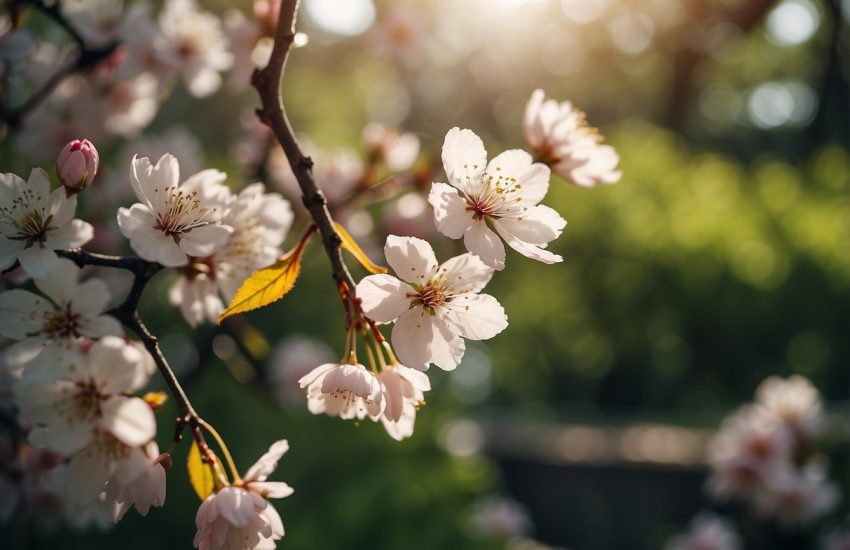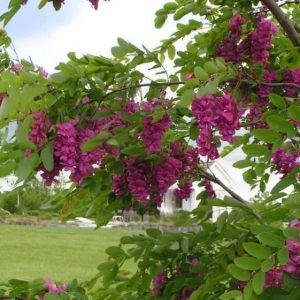Orange Flower Trees in Florida: A Guide to Identification and Care
Florida is known for its beautiful landscapes, sunny weather, and diverse wildlife. One of the most striking features of the state’s natural beauty is the abundance of orange flower trees that can be found throughout the region. These trees are not only visually stunning but also play an important role in the local ecosystem.

Orange flower trees are a popular choice for landscaping in Florida due to their vibrant color and year-round blooms. The Geiger tree, for example, is a small to medium-sized tree that is native to Florida and other parts of the Caribbean. It is known for its bright orange flowers that bloom throughout the year, making it a popular choice for homeowners and landscapers alike. Similarly, the Red Silk Cotton Tree is another popular choice, with large, orange-red flowers that can grow on branches up to 20 feet tall.
In addition to their aesthetic appeal, orange flower trees also provide important habitat and food sources for local wildlife. Birds and bees are particularly drawn to the nectar-rich flowers, which can help support healthy populations of these important species. Overall, orange flower trees are a beautiful and beneficial addition to any Florida landscape.
Diversity of Orange-Flowering Trees in Florida
Florida is home to a diverse range of orange-flowering trees, both native and non-native. These trees are popular for their vibrant blooms and ability to attract pollinators such as hummingbirds and butterflies. In this section, we will explore some of the prominent species of orange-flowering trees found in Florida and their characteristics.
Prominent Species and Their Characteristics
One of the most popular orange-flowering trees in Florida is the Geiger tree (Cordia Sebestena). This evergreen tree can grow up to 25 feet tall and is known for its bright orange flowers that bloom year-round. The Geiger tree is a popular choice for landscaping due to its dense, round canopy and ability to attract pollinators.
Another popular orange-flowering tree in Florida is the Royal Poinciana (Delonix Regia). This deciduous tree can grow up to 40 feet tall and is known for its stunning display of orange-red flowers in the summer months. The Royal Poinciana is also commonly referred to as the “Flame of the Forest” due to its fiery blooms.
The Orange Champaca (Michelia Champaca) is another orange-flowering tree that is native to South Florida and the Florida Keys. This evergreen tree can grow up to 50 feet tall and is known for its fragrant orange blossoms that bloom in the spring and summer months. The Orange Champaca is a popular choice for landscaping due to its attractive foliage and ability to attract pollinators.
Other prominent orange-flowering trees found in Florida include the African Tulip Tree (Spathodea Campanulata) and the Pomegranate (Punica Granatum).
Native vs. Non-Native Species
While many orange-flowering trees are non-native to Florida, there are also several native species that are important to the state’s ecosystem. Native trees such as the Geiger tree and the Orange Blossom (Citrus Sinensis) provide habitat and food for native wildlife and are an important part of Florida’s natural heritage.
Non-native species such as the Royal Poinciana and the African Tulip Tree can also provide important ecological benefits, but may also have negative impacts on native ecosystems. It is important to carefully consider the environmental impact of introducing non-native species and to prioritize the use of native species in landscaping and restoration projects.
In conclusion, Florida is home to a diverse range of orange-flowering trees that provide important ecological benefits and are a popular choice for landscaping. Whether native or non-native, these trees add vibrancy and beauty to Florida’s natural landscape.
Cultivation and Care of Orange-Flowering Trees
Orange-flowering trees are a beautiful and fragrant addition to any Florida landscape. These trees are known for their lush foliage, spreading canopies, and vibrant orange flowers that bloom throughout the year. Proper cultivation and care are essential for these trees to thrive.
Optimal Growing Conditions
Orange-flowering trees prefer warm temperatures and full to partial sun exposure. They can tolerate drought and salt, making them ideal for Florida’s humid climate. These trees grow best in well-drained soil conditions and thrive in hardiness zones 9-11. They are frost-free and thrive in a frost-free area.
Maintenance and Landscaping Tips
To care for orange-flowering trees, it is important to fertilize them regularly and provide adequate water. These trees are drought-tolerant but require regular watering during the first few years of growth. They are also fast-growing, making them an excellent choice for a focal point or specimen tree in the landscape.
Orange-flowering trees are cold-hardy and can tolerate temperatures as low as 20°F. However, it is best to grow them in pots and bring them indoors during colder months. These trees are also drought-tolerant and can survive in areas with limited rainfall.
To maintain the visual appeal of these trees, it is important to prune them regularly. Pruning helps to maintain the shape and size of the tree and encourages new growth. Orange-flowering trees are also ideal shade trees and can be used to create an ornamental landscape.
In summary, cultivating and caring for orange-flowering trees requires providing optimal growing conditions, regular maintenance, and landscaping tips. These trees are an excellent addition to any Florida landscape and can provide visual appeal, shade, and fragrant flowers.


